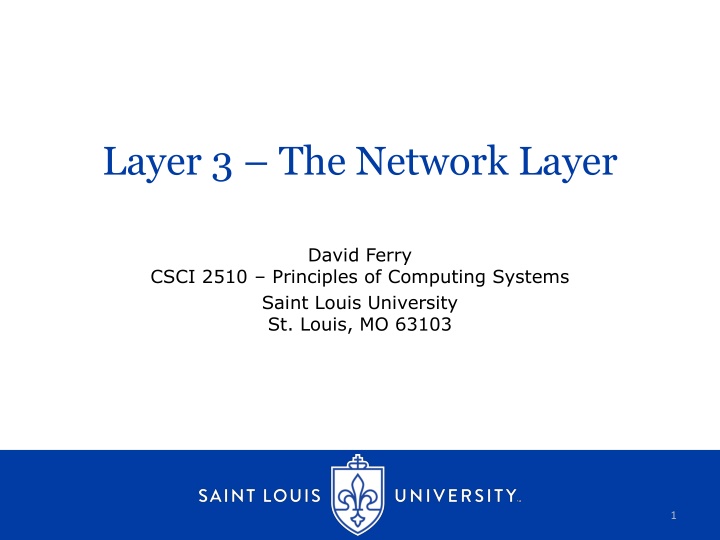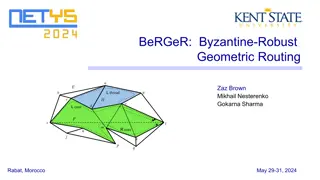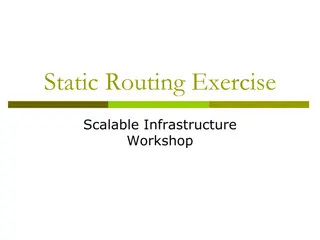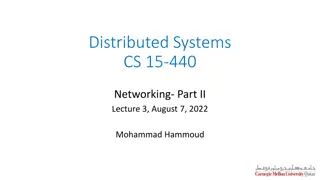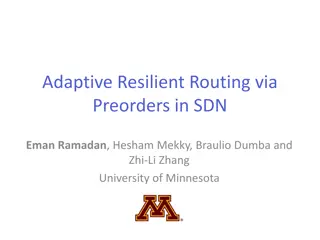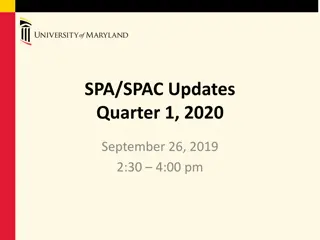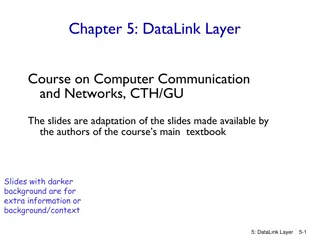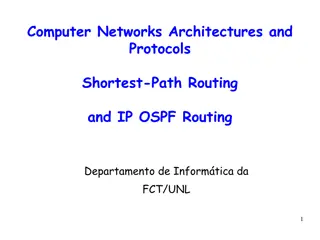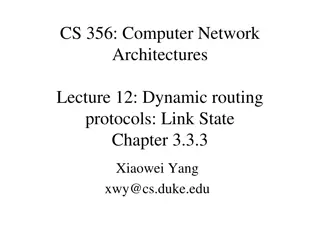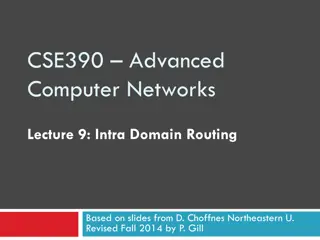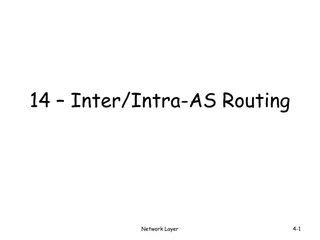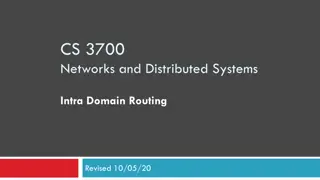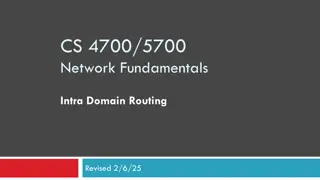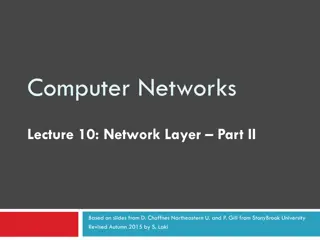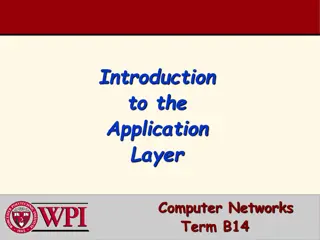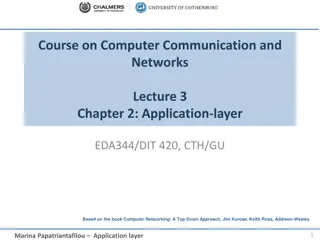Layer 3: Network Protocols & Routing in Computing Systems
Exploring Layer 3 of the OSI model - focusing on network protocols like IPv4 and IPv6, and routing within a network. Understand the significance of IP addresses, the differences between IPv4 and IPv6, and how data is routed in modern networks. Dive into the principles of computing systems with a detailed look at network layers and their functionalities.
Download Presentation

Please find below an Image/Link to download the presentation.
The content on the website is provided AS IS for your information and personal use only. It may not be sold, licensed, or shared on other websites without obtaining consent from the author.If you encounter any issues during the download, it is possible that the publisher has removed the file from their server.
You are allowed to download the files provided on this website for personal or commercial use, subject to the condition that they are used lawfully. All files are the property of their respective owners.
The content on the website is provided AS IS for your information and personal use only. It may not be sold, licensed, or shared on other websites without obtaining consent from the author.
E N D
Presentation Transcript
Layer 3 The Network Layer David Ferry CSCI 2510 Principles of Computing Systems Saint Louis University St. Louis, MO 63103 1
Recall: 7-Layer OSI Model Application to Application Application Application Presentation Presentation Session Session Entity to Entity Transport Transport Socket to Socket Network Network Interface to Interface Data-Link Data-Link Hardware to Hardware Physical Physical Physical Connection Last time: The data-link and physical layers allow communication between two directly connected machines Today: Suppose machine A is connected to B, and B is connected to C how can machines A and C communicate? CSCI 2510 - Principles of Comp. Systems 2
The Network CSCI 2510 - Principles of Comp. Systems 3
Routing in a Network C A 1 3 3 2 1 B 2 E D Each device has one or more network interfaces Routing is deciding which network interface to send a communication over, with the intent of getting it to a final destination The routing decision is a local decision CSCI 2510 - Principles of Comp. Systems 4
Layer 3 Protocols: IPv4 and IPv6 IP = Internet Protocol Purpose is to answer that routing question- how does data get to a distant remote machine? All hosts are identified by an IP Address IPv4 Addresses 4 bytes expressed as decimal octets 232 total addresses E.g. 165.134.107.80 (hopper.slu.edu) SLU owns all of 165.134.XXX.XXX Each octet has possible values 0-255 IPv6 Addresses 16 bytes expressed as hexadecimal octets 2128 possible addresses E.g. fe80::c083:ecff:fe0a:1538 (zero-value octets omitted at :: ) CSCI 2510 - Principles of Comp. Systems 5
IPv4 vs IPv6 IPv4 and IPv6 most notable difference is address space size and representation 32 bits vs 128 bits Some early adopters have huge address spaces, which ate up a lot of the IPv4 address space early on (see https://xkcd.com/195/) But IPv6 also has improvements to efficiency and security as well Currently in practice almost all networking hardware/software supports both IPv4 and IPv6 CSCI 2510 - Principles of Comp. Systems 6
The Routing Question Q: Given an IP address destination, how does a packet get there? Recall that routing decisions are local! Q: Given an IP address destination, which interface do I send it out over? CSCI 2510 - Principles of Comp. Systems 7
Other Elements of Internet Protocol Fragmentation: Divides large communications into packets of (typically) 64K or less. Reassembles (de-fragments) large communications on the receiving end. IPv6: Encrypts/decrypts packets You can do this with IPv4 as well, but it was built on top of IPv4, so was not universally available. The IPv6 standard requires encryption, which means that all IPv6 capable devices must also support encryption. CSCI 2510 - Principles of Comp. Systems 8
Routing Tables Each machine maintains its own routing table. Creates a mapping between IP address destinations and output interfaces Destination Network Mask Interface Cost 0.0.0.0 0.0.0.0 eth0 1000 192.168.63.1 255.255.192.0 wlan0 10 192.168.1.10 255.255.255.254 eth1 1 165.134.13.254 255.255.255.255 eth2 1 Router selects the output interface based on the longest prefix match in the routing table E.g. the third rule matches both addresses 192.168.0.10 and 192.168.0.11 to the 31st bit Many routing tables can contain other info as well: e.g. cost CSCI 2510 - Principles of Comp. Systems 9
Routing Example 192.168.1.100 C A 192.168.0.0 192.168.0.10 192.168.1.101 B E 192.168.1.0 192.168.0.11 D 192.168.1.10 Suppose that computer B wants to contact computer E, and already has its destination address of 192.168.1.101 CSCI 2510 - Principles of Comp. Systems 10
Routing Example 192.168.1.100 C A 192.168.0.0 192.168.0.10 eth0 192.168.1.101 B E 192.168.1.0 192.168.0.11 D 192.168.1.10 Machine B Routing Table Destination Mask Interface 0.0.0.0 0.0.0.0 eth0 192.168.0.11 255.255.255.255 loopback CSCI 2510 - Principles of Comp. Systems 11
Routing Example 192.168.1.100 C A 192.168.0.0 192.168.0.10 eth0 eth1 eth2 192.168.1.101 B E 192.168.1.0 192.168.0.11 192.168.0.0 Routing Table D Destination Mask Interface 0.0.0.0 0.0.0.0 eth2 192.168.1.10 192.168.0.10 255.255.255.255 eth0 192.168.0.11 255.255.255.255 eth1 192.168.1.0 255.255.255.0 eth2 CSCI 2510 - Principles of Comp. Systems 12
Routing Example 192.168.1.100 C A 192.168.0.0 192.168.0.10 wlan0 eth0 192.168.1.101 192.168.1.0 B E eth1 192.168.0.11 192.168.1.0 Routing Table Destination Mask Interface 192.168.1.10 255.255.255.255 eth1 D 192.168.0.0 255.255.255.0 eth0 192.168.1.10 192.168.1.100 255.255.255.255 wlan0 192.168.1.101 255.255.255.255 wlan0 192.168.0.10 255.255.255.255 eth0 CSCI 2510 - Principles of Comp. Systems 13
The Missing Piece OK- so IP routing is done locally via routing tables how do we actually get those routing tables in the first place? Small networks can be built by hand Some networks can be done by standard E.g. Home networks almost always look like this: ISP Large networks done by network engineers with algorithms E.g. Border Gateway Protocol (BGP) allows large internet providers to cooperate and declare what IP addresses they can route to CSCI 2510 - Principles of Comp. Systems 14
The Internet Really just a big collection of routers and routing tables Vaguely hierarchical because it s easier to manage Internet Backbone Charter Core Router Verizon Core Router Charter Mid-level Router Verizon Mid-level Router Your Home Friend s Home CSCI 2510 - Principles of Comp. Systems 15
Some Routing Tools Routing information is public to a degree Windows: ipconfig get current machine s IP information nslookup resolve domain names ping see if you can get a response from a server tracert trace path to host Linux: ifconfig get current machine s IP information host resolve domain names ping see if you can get a response from a server traceroute trace path to host route see routing tables CSCI 2510 - Principles of Comp. Systems 16
